The evolution of the gas mask and its components
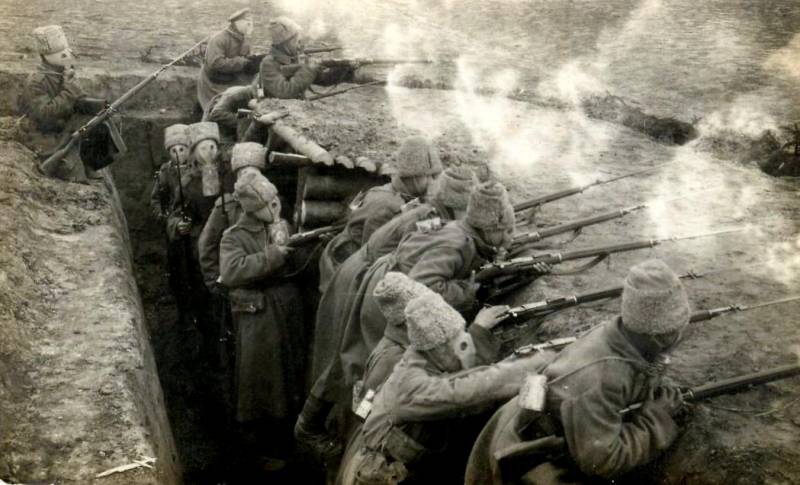
Russian army soldiers wearing Zelinsky-Kummant gas masks. Photo: Wikimedia Commons
More than a hundred years ago, the world's first gas mask of a modern design was created in the Russian Empire, including a protective mask and a filter box. Over the next few decades, the original design of such a means of protection was constantly developed and improved. It was improved by refining the main elements, as well as introducing new materials and technologies. In general, the development of the gas mask was carried out in several directions.
Basis of the basics
As you know, the first full-fledged gas mask of a modern appearance was developed by the Russian chemist N.D. Zelinsky and technologist M.I. Kummant in 1915. They found the most successful design and layout of such a means of protection, and also created an effective filter composition available at the level of technology of that time. In 1915-16 The gas mask went into production and entered the imperial army. In addition, documentation for this product was provided to the Entente allies.
The Zelinsky-Kummant gas mask was distinguished by a certain simplicity. He had a thin rubber mask that covered his entire head and fit as tightly as possible to it. The eyes had a pair of holes with glasses of small diameter. At the bottom in front, opposite the nose and mouth, there was a bushing for attaching the filter box.
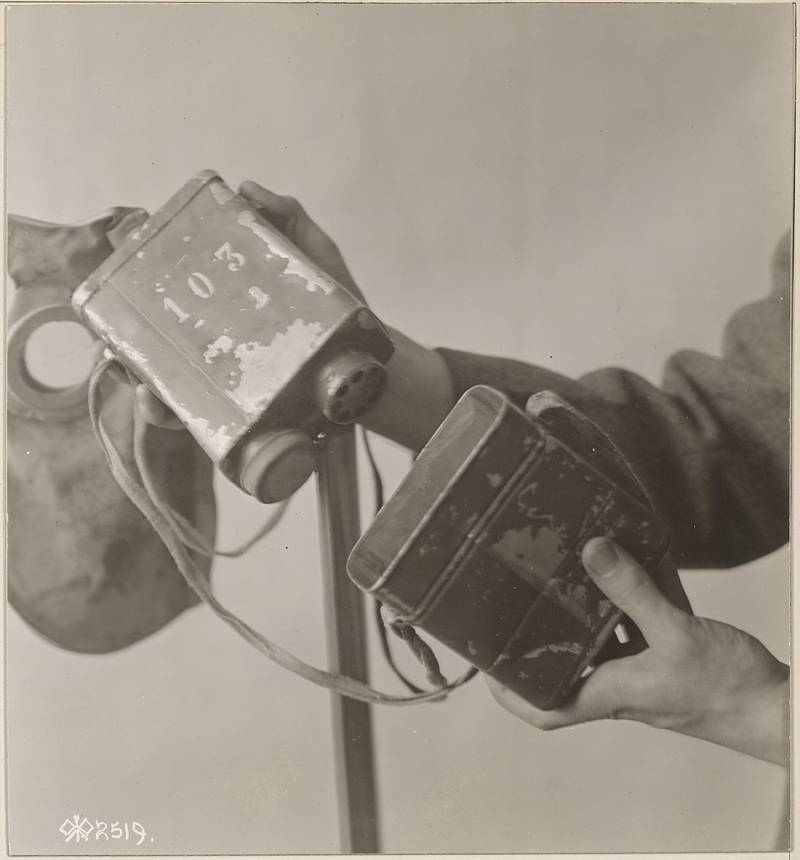
The first domestic gas mask close-up. Photo: Wikimedia Commons
The box had a tin body and a pair of valves at the ends - for the entry of contaminated air from outside and for the release of purified air into the mask. Inside were granules of activated charcoal obtained from birch or linden. Such a filler provided complete protection against chlorine, and could also absorb other toxic substances for some time.
Being the first of its kind, the Zelinsky-Kummant gas mask had both advantages and disadvantages. Nevertheless, the appearance of this product made it possible to provide their army and allies with means of protection against gases. At the same time, both in our country and abroad, work began to improve the original design, which soon yielded certain results.
Evolution of the mask
The mask of the world's first gas mask was actually a rubber bag of the required shape with the required devices. Subsequently, this element underwent significant improvements and changes. Masks have been improved due to the advent of new materials and production technologies, as well as to improve ergonomics and wearing comfort.
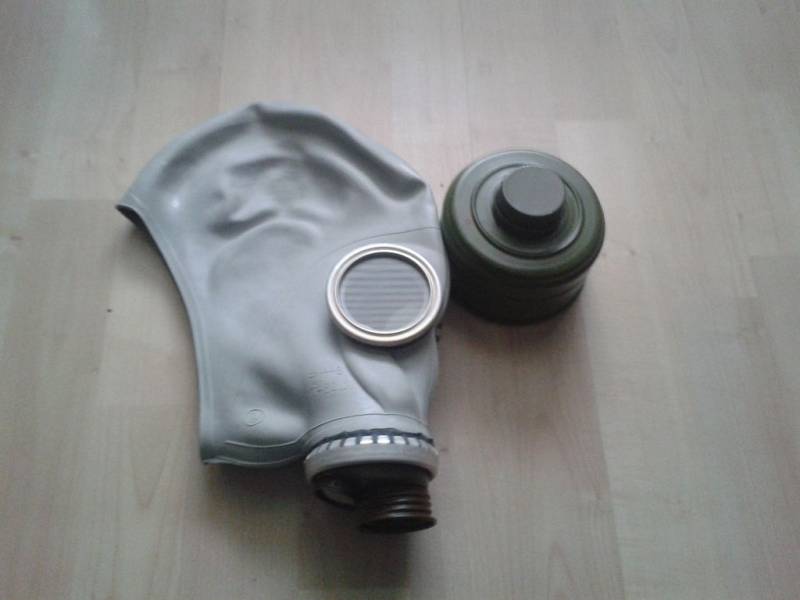
The civilian gas mask GP-5 is one of the most common and well-known models. The valve box is clearly visible on the mask. The filter box is not installed. Photo: Wikimedia Commons
The emergence of new materials made a significant contribution to the development of gas masks. For a long time, these devices were made from different types of rubber to meet the requirements. In recent decades, rubber has begun to give way to various plastics and polymers, which make it possible to obtain the desired performance and ergonomic characteristics while simplifying production.
The shape of the front part was being optimized. Thus, to seal and reduce internal volume, more rigid masks with a tight fit and anatomical shape were created. The most important innovation was the creation of masks of several sizes, selected in accordance with the user's anatomy. As an example, we can recall all the main models of Soviet gas masks, for example, the common civilian GP-5.
In order to save materials and optimize production, the back of the mask was changed. Initially, it was a “bag” connected to the front part. Subsequently, gas masks with a belt system, such as GP-4, etc., were created in our country and abroad. Subsequently, closed masks and products with belts were used in parallel, depending on the intended conditions of use and future users.
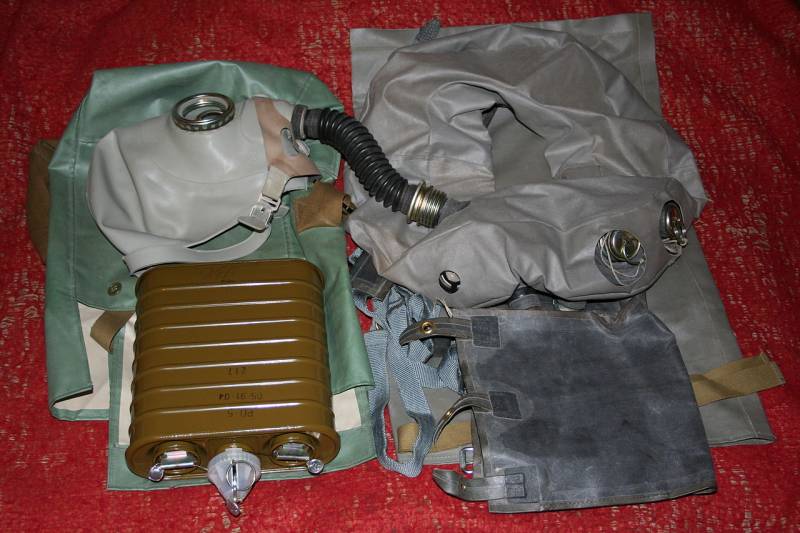
Insulating gas mask IP-5. Below the bag is a box for regenerative cartridges; on the right is a breathing bag. Photo: Wikimedia Commons
Currently, when developing masks, much attention is paid to the features of their future use. The gas mask should not interfere with the wearing of a helmet and other protective equipment, communications equipment, etc., the use weapons and performing other tasks.
Additional devices
Zelinsky and Kummant equipped the mask with only a pair of glasses for viewing and a mount for the filter box. Then the design of these devices was improved, and new units for various purposes appeared.
Various modern gas masks are equipped with the so-called. valve box. This is a rigid body device attached to the bottom of the mask. As the name suggests, it has a seat for a filter box with an inlet valve and an outlet valve for exhalation. When using polymer materials, the valve box may be absent - its functions are performed by the corresponding sections of the mask.
Initially, the valve for the filter box was located at the bottom of the mask, and the box itself hung below. As new designs were created and filtering-absorbing materials were searched for, the size and shape of the boxes changed. Smaller devices improved ergonomics, and it became possible to mount them not only from the front, but also from the side. Domestic products of the PGM series or the American M50 have this arrangement, and one or two boxes can be used with installation on the desired side. In addition, boxes that are carried in a bag and have a corrugated hose for connection to a mask have become widespread.
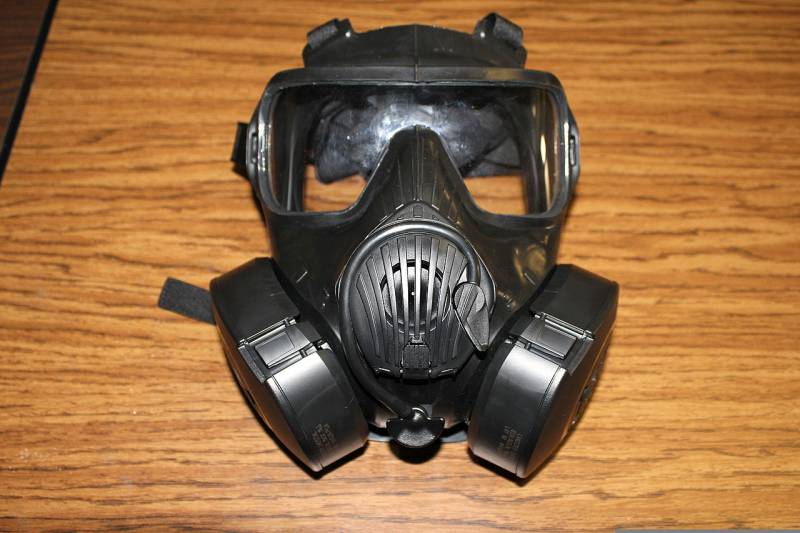
Modern American gas mask M50 with two filter boxes. Photo by US Department of Defense
Gas mask arr. 1915 had glass of a minimum diameter to reduce the cost. In the future, the so-called the spectacle unit received glazing of a larger diameter, which gave better visibility. In recent decades, thanks to the emergence of various plastics and similar materials, masks with a single large panoramic glass have been developed and widely introduced. The nuclear threat of the Cold War led to the advent of removable light filters to protect the eyes from the light flash of an atomic explosion.
An optional but useful innovation is the intercom. It is a membrane in a sealed housing and improves audibility from under the mask. The membrane was used by the Soviet GP-4, American M50, etc. The mask can also be equipped with a thin soft tube with valves, allowing you to drink from a flask without removing the gas mask.
Filtration and absorption
The first Zelinsky-Kummant gas mask filtered the air and absorbed toxic substances using activated charcoal granules. Other options for adsorbents based on available substances and components have also been proposed.
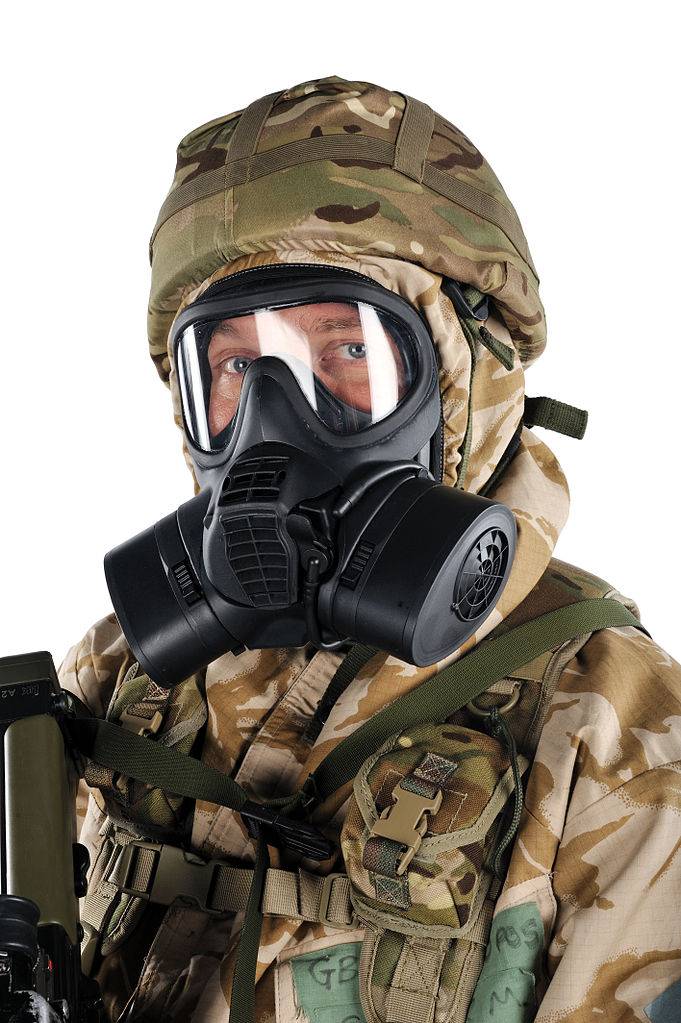
British soldier wearing a GSR gas mask. Photo by UK Ministry of Defense
Already during the First World War, new effective solutions appeared. Thus, the Entente countries began to supplement activated carbon with the so-called. chemical absorbent - a mixture of substances capable of retaining phosgene and other gases. Gas mask designers responded to the emergence of aerosol toxic substances with additional filters that prevent droplets from entering the box. When using a box with a hose, the bag plays the role of an additional filter.
The filter-absorbing boxes of modern gas masks have several degrees of protection. At the inlet there are mechanical filters against large and medium-sized solid particles or droplets, as well as dangerous microorganisms. Inside the box are placed fairly complex mixtures of chemicals and adsorbents capable of retaining and/or binding a variety of toxic substances.
An alternative to air purification is the use of so-called. isolated gas masks. In this case, instead of a filter box, a special system based on a regenerative cartridge is used. The latter contains a chemical composition that decomposes carbon dioxide and releases oxygen. In our army, at different periods, insulating gas masks IP-46 and IP-5 were used.
Evolutionary process
A modern gas mask in its architecture differs little from that developed by N.D. Zelinsky and M.I. Kummanta. However, ideas and principles proposed more than a hundred years ago are now being implemented in other ways, as well as using modern solutions in a variety of areas. Modern materials for masks and boxes are used, the shape and design of these units have changed, more advanced filtering and absorbing compositions have been developed, etc.
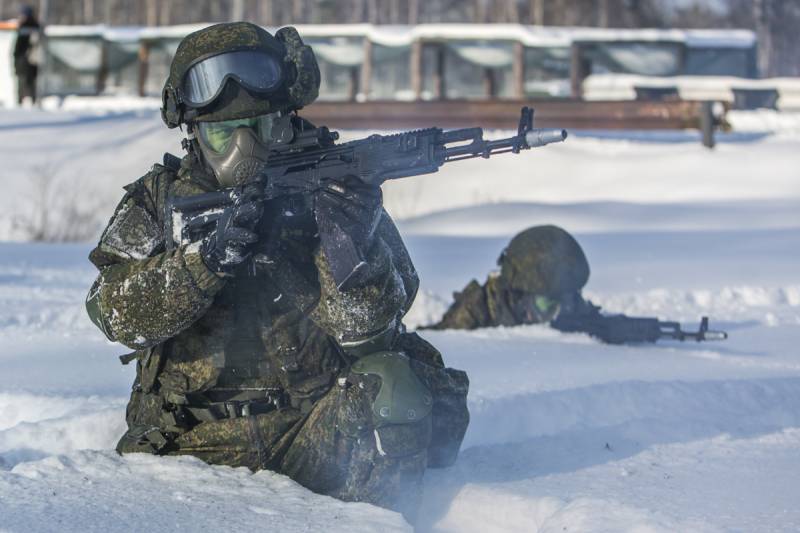
Russian fighters in "Ratnik" equipment. PMK-4 gas masks with panoramic glazing, double-sided installation of a filter box and an intercom are used. Photo by the Russian Ministry of Defense
Gas masks have long gone beyond the functions defined by their name, and protect not only from poisonous gases. Modern gas masks, such as the Russian PMK-4/5 from the Ratnik equipment or similar foreign models, cope with a wider range of threats. They protect against poisonous gases and aerosols, radioactive dust, biological agents, etc.
Due to its lightweight and improved design, the gas mask is comfortable to wear and does not interfere with the use of other equipment and protective equipment. It also does not cause inconvenience when using weapons, operating equipment and solving combat or other tasks in general. The advantages over earlier models are obvious.
Thus, over the last century, Russian/Soviet and foreign developers of gas masks have used the latest achievements of various industries and sciences, and based on them they have created new designs of protective equipment. The process of gas mask development, which began during the First World War, continues successfully and regularly produces new results. Thanks to this, military personnel, employees of special and emergency services, as well as civilian specialists have every chance of not being harmed by dangerous agents of various kinds.
Information